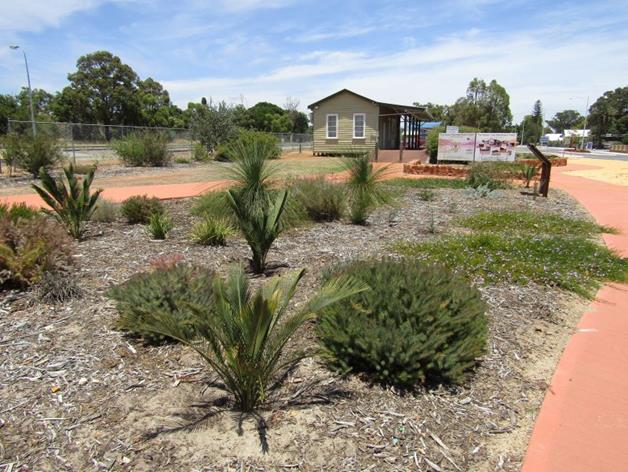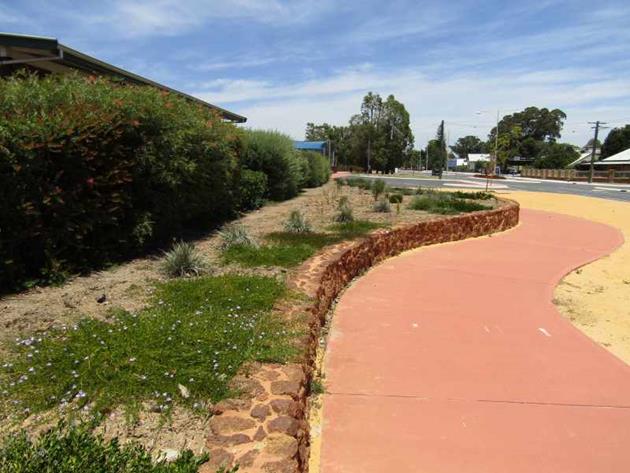Garden Volunteers
The work of Garden Volunteers in Paterson Street, Mundijong in the
Shire of Serpentine Jarrahdale
Western Australia.
These gardens have been planted and are maintained by a group of garden volunteers who are Mundijong residents. This comes with a special wish this Christmas for Henry and his fellow volunteers who are doing a fantastic job. The majority of Mundijong residents would not know that these gardens are the work of fellow residents known as Garden Volunteers. I took these photos two days ago, in one more year the plants will be much bigger. In a couple of years the garden volunteers might have to do some pruning of bigger plants

Native gardens that have been established and are regularly maintained by Garden Volunteers.
The plant in front is Macrozamia riedlei commonly called Zamia Palm. The two immediately behind are the beautiful Calothamnus hirsutus. It does not have a common name but can easily been seen growing in the Mundijong Road Reserve in Mundijong which is a Rare Flora Road Reserve. The prostrate bright geen foliage plant with masses of purple trumpet flowers is an attractive form of Hemiandra pungens commonly called Snake Bush. This flowers profusely over summer. There are several other species in the background but particularly prominent are the beautiful little Grass Trees Xanthorrhoea preissii. These Grass Trees will not grow tall trunks for many years but their foliage is always an attractive addition to native gardens.

This is native garden which has been esablished by garden volunteers using local plant species.
This wall was built by prisoners from the Karnet Prison Farm. The planting by the garden volunteers has already enhanced the beauty of the wall even though the garden is still young. There are approximately 12 different native species in this section including the Common Smokebush Conospermum stoechadis which used to be very 'common' in Serpentine Jarrahdale, but is no longer. It is important to have as much bio-diversity as possible in our native flowerbeds to provide nectar for nectar eating birds and insects for the insect eating birds throughout the year. The dark green groundcover that can be partially seen on the bottom left is Dodonaea ceratocarpa a groundcover form and it can be seen repeated several times along the flowerbed. It is a plant that makes an excellent groundcover but little known and seldom used. All these plants were grown from tubestock size plants grown in our nursery.
Hooray for Henry and his Garden Volunteers!